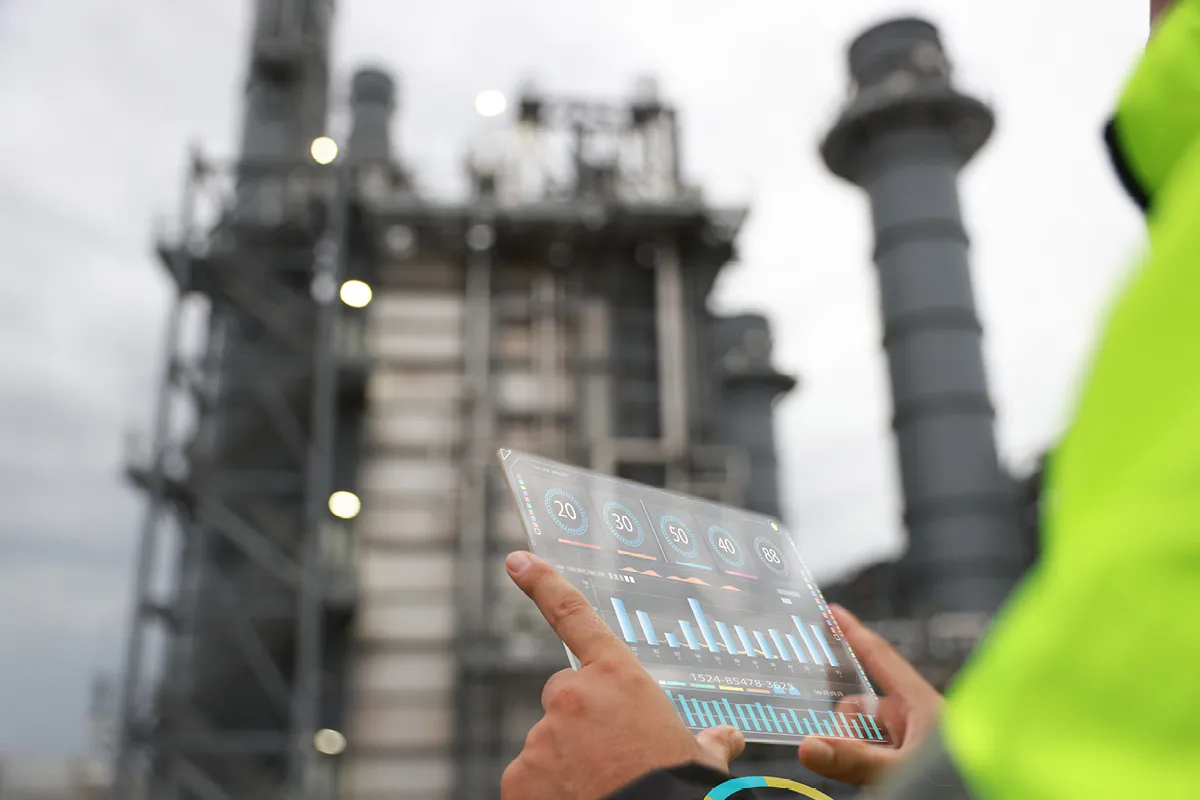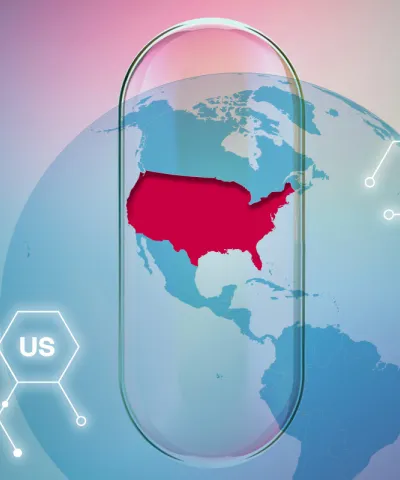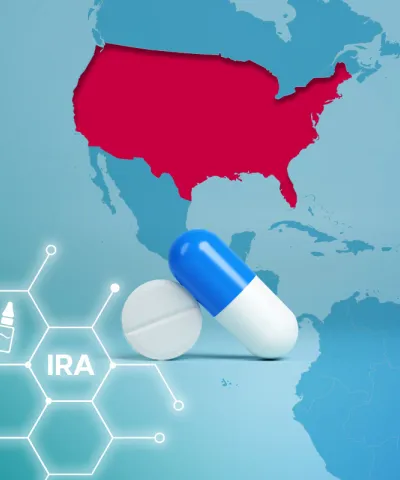Energy’s next chapter: Three bold visions
Why the future of energy retail starts now
The way that we buy and sell energy is going through a major transformation. What was once a commoditized, transaction-based industry is changing into a dynamic service ecosystem. Fueled by AI, digital platforms, and policy incentives like the US Inflation Reduction Act, energy providers must deliver more than kilowatt-hours. Now, they must offer intelligent, value-driven experiences.
At the same time, customer expectations are rising. “Digital natives” expect Amazon-like convenience, transparency, and personalization. Meanwhile, the urgency of the climate crisis is redefining the energy value proposition around sustainability and impact.
By 2030, digitalization, artificial intelligence (AI), and rising customer expectations will fundamentally reshape how energy is bought, sold, and experienced. Providers must prepare for increasing churn, changing regulatory environments, and growing demand for seamless, personalized, and sustainable services.
Here’s what the shift could look like in action, and what energy providers can start doing now to get ahead by 2030.
Below, we’ve outlined three strategic scenarios for how energy retail may evolve by 2030:
- Customer-controlled model – Emphasizes customer autonomy through integrated, behind-the-meter solutions.
- Branded partnerships model – Focuses on delivering bundled, cross-sector services through platform-driven partnerships.
- Smart digital sales model – Drives efficiency and personalization using AI and automation.
These models are not mutually exclusive. Hybrid strategies are possible and, in many cases, advisable. Future competitiveness will hinge on agility, data fluency, and customer-centric innovation.
Before getting into each scenario, let’s look at how digitalization is reshaping the energy industry, from how power is delivered to how customers engage and choose their providers.
Part I: Digitalization is redrawing the energy map
Why energy needs to think like a tech company
By 2030, an estimated 50% of consumers in developed markets will be digital natives. This generation demands seamless digital experiences, akin to what they are accustomed to from platforms like Amazon. These customers expect intuitive interfaces, real-time interactions, and highly tailored experiences. Energy providers must adapt their digital offerings to meet these expectations or risk losing relevance.
Regulations: What the IRA and EPA mean for energy sales
At a macroeconomic level, the US energy transition is now steered primarily by federal‑level incentives, most notably the Inflation Reduction Act, and a patchwork of state clean‑energy standards rather than an overarching consumption cap. Official EPA, USDE, and USDA projections show a 29–46 % cut in net greenhouse‑gas emissions by 2030 (relative to 2005), driving investment in renewables, storage, and building efficiency. While some of this may be reversible under the new administration, significant momentum has already been built up. Energy retailers must align portfolios with this incentive‑driven landscape and prepare for faster‑than‑expected load‑shape changes as electrification accelerates.
Microeconomics: Providing differentiated value proposition to customers
Customer churn dynamics differ sharply by state: in competitive US retail markets such as Texas, recent surveys conducted in late 2024 indicate more than half of residential customers intend to shop for a new provider in the next year. More recent data from the Home Energy Club shows 35% of Texas customers had been with their provider for more than 5 years and 59% would switch providers for $50 in savings. Going forward, retail providers will need to proactively mitigate customer churn by providing and articulating their value beyond power delivery. A seamless, digital customer experience will be crucial to success.
In monopoly states, 'supplier switching' increasingly means customers adopting rooftop solar, batteries, or community‑solar subscriptions, and effectively bypassing the incumbent utility. Energy sellers therefore face dual churn pressures: competitive‑market switching in deregulated states and behind‑the‑meter defection elsewhere, making cross‑channel retention strategies critical.
However, this transformation goes beyond retention; it is about securing long-term viability. Customers now expect seamless digital interactions, transparent pricing models, and service quality on par with leading tech and telecommunications firms. Energy providers who proactively offer smart, personalized solutions and embed customer-centricity into their core processes will not only improve retention but also gain a distinct competitive advantage.
Environment: Decoding sustainability for customers
Two‑thirds of Millennial and Gen Z US consumers now say a supplier’s climate footprint influences their purchase decision. Translating lifecycle‑carbon data into easy‑to‑grasp labels, such as '100 % renewable‑backed electricity' or 'IRA tax‑credit eligible efficiency upgrade', is becoming table stakes for retention. Regional differentiation will remain essential as state policies and grid mixes diverge.
Personalization at scale: AI is your new sales team
Projections indicate that AI could contribute over $15 trillion to the global economy by 2030, with US utilities and energy retailers capturing a disproportionate share through predictive analytics, real‑time pricing engines, and automated portfolio optimization, which are critical levers for efficiency and market positioning. Firms which can successfully harness AI agents for customer service and AI-enabled analytics to approach customers with high-value personalization could gain a real edge in highly competitive energy markets.
Key takeaways
Digitalization presents both challenges and opportunities for energy providers. Digital natives demand intuitive, seamless services, while regulatory frameworks push for greater energy efficiency. Meanwhile, rising customer churn necessitates more flexible, personalized, and sustainable offerings. AI and automation will be crucial in enhancing customer service and optimizing grid and pricing models. A little proactivity now can make all the difference down the line.
Against this backdrop, three strategic scenarios emerge and illustrate how energy sales may evolve by 2030.
Part II: Roadmap 2030 – three scenarios for the future of energy sales
The energy sector will be driven by technological innovation and shifting customer expectations. Looking ahead to 2030, we see three strategies taking shape:
- Customer-controlled model
- Branded partnerships model
- Smart digital sales model
Each scenario represents a distinct approach with implications for value creation and market positioning. As noted, companies may pursue one of these models or adopt hybrid strategies. However, early action is essential as fast-moving competitors are already laying the groundwork for their future market position.
Scenario 1) Customer-controlled model
In this scenario, energy autonomy becomes a key business model. Customers increasingly seek independence in energy supply through solar panels, battery storage, and other decentralized technologies. Energy providers need to move beyond just selling power, and become partners, offering energy solutions that balance tech, regulations, and economics.
The focus shifts from selling individual products to designing and delivering tailored energy autonomy solutions. Success will hinge on a deep understanding of individual household and business needs, translating them into integrated solutions. For example, instead of simply installing solar panels, a provider might design a full solution that includes solar generation, smart battery storage, electric vehicle charging, and real-time energy management software, all self-managed and aligned to a customer’s usage patterns, utility rates, and local regulations. The primary value proposition lies in reducing complexity, through expert consulting, intelligent system integration, and seamless end-to-end services.
Companies that position themselves effectively in this space will attract high-value customers and foster long-term relationships. A robust partner ecosystem will be crucial to delivering cutting-edge, cost-effective solutions.
Scenario 2) Branded partnerships model
This scenario envisions an energy sales model that extends beyond electricity supply, creating an integrated service ecosystem through strategic partnerships. As energy providers face increasing product complexity, integrating third-party services will be essential.
Providers in this model will offer bundled services, including telecommunications, insurance, and smart home solutions, delivering a seamless, one-stop-shop experience. For example, a customer might sign up for a green energy plan and also gain access to a discounted smart thermostat, home insurance tailored to solar panel coverage, and a high-speed internet package, all managed through a single provider and app. Through a digital and sustainable ecosystem, companies can boost customer retention and tap into new revenue streams.
By leveraging white-label partnerships, energy providers can expand their offerings without significant capital investments or operational risk. Those who master the art of ecosystem management can position themselves as central full-service providers, creating long-term value for customers.
Scenario 3) Smart digital sales model
This scenario centers on AI-driven operations, where intelligent algorithms handle the entire customer journey, from lead generation and support to pricing, contract execution, and service.
AI will revolutionize sales through real-time pricing models, predictive demand analytics, and dynamic customer engagement. Automated assistants and chatbots will provide 24/7 personalized support, enhancing efficiency and customer experience. For example, a customer could receive a real-time, personalized energy plan through an AI-powered platform, complete with dynamic pricing, instant support, and automated contract setup, all within minutes.
Beyond operational efficiencies, AI-driven energy sales will contribute to sustainability by optimizing energy usage patterns and reducing emissions. Companies should work to transition away from traditional sales models and invest in AI-powered platforms and partnerships with tech firms and robust R&D efforts will be essential for long-term competitiveness.
Scenario comparative snapshot:
Model | Focus | Differentiator | Customer Relationship |
| Customer-controlled model | Autonomy & integration | Custom energy systems | High-touch, long-term |
| Branded partnerships model | Service ecosystem | Third-party bundling | Platform loyalty |
| Smart digital sales model | Full automation | AI & efficiency | Digital-first, scalable |
Part III: Priorities for energy providers
Moving forward, energy providers should act decisively. The outlined scenarios provide viable pathways, but execution will depend on regulatory developments, technological advancements, and market forces. Success will not be defined by rigid end-goals but by strategic agility and a clear "North Star."
Looking ahead with purpose:
- Define a direction - choose a scenario or hybrid path and align your organization accordingly.
- Invest in AI and data infrastructure - success in any model requires robust, clean, and integrated data pipelines.
- Optimize the digital sales journey - design seamless, end-to-end customer experiences that rival other industries.
- Develop agile, cross-functional teams - build an innovation culture that can test, learn, and adapt quickly.
- Build ecosystems, not just products - partner across industries to expand offerings and build resilient customer relationships.
Future proof your energy sales
As we’ve discussed, the energy retail market is being redefined by customer behavior, regulation, and technology. There is no single solution, but inaction is the greatest risk.
To lead in 2030, providers must:
- Commit to transformation, not just optimization.
- Build customer-centric platforms, not siloed products.
- Start piloting now, before the curve steepens.
Digital excellence isn’t optional, and energy is no exception. It is the foundation for relevance, resilience, and long-term success.
Want to explore how your company can get up to speed on this digital journey? Get in touch with our experts: Dr. Thomas Haller, Dr. Michael Einstein, and Adam Echter.








